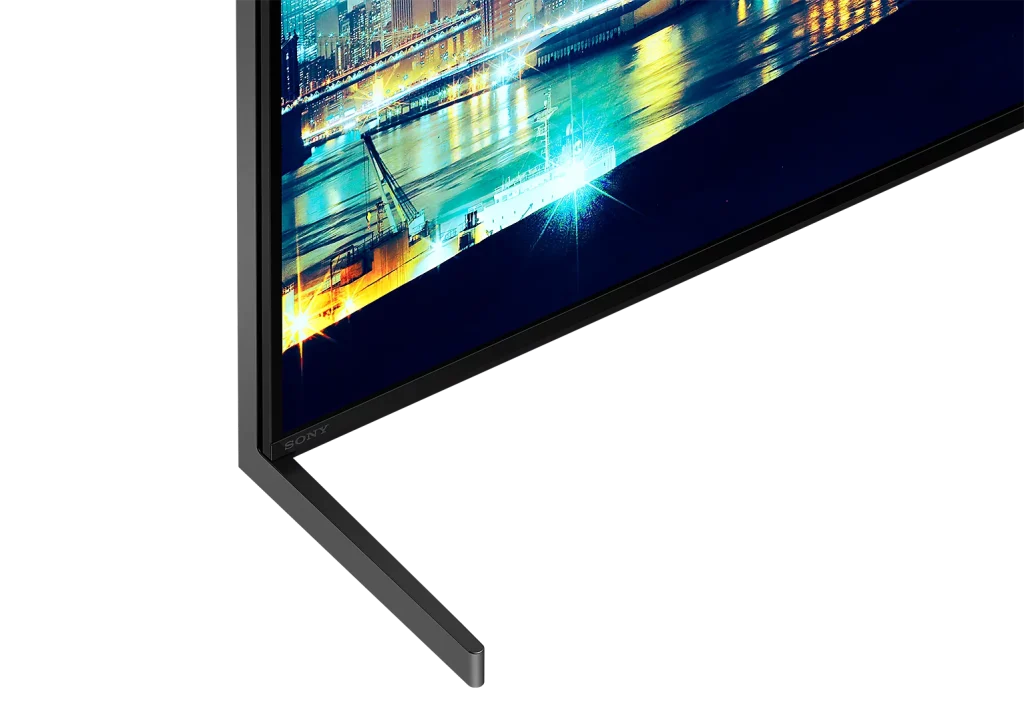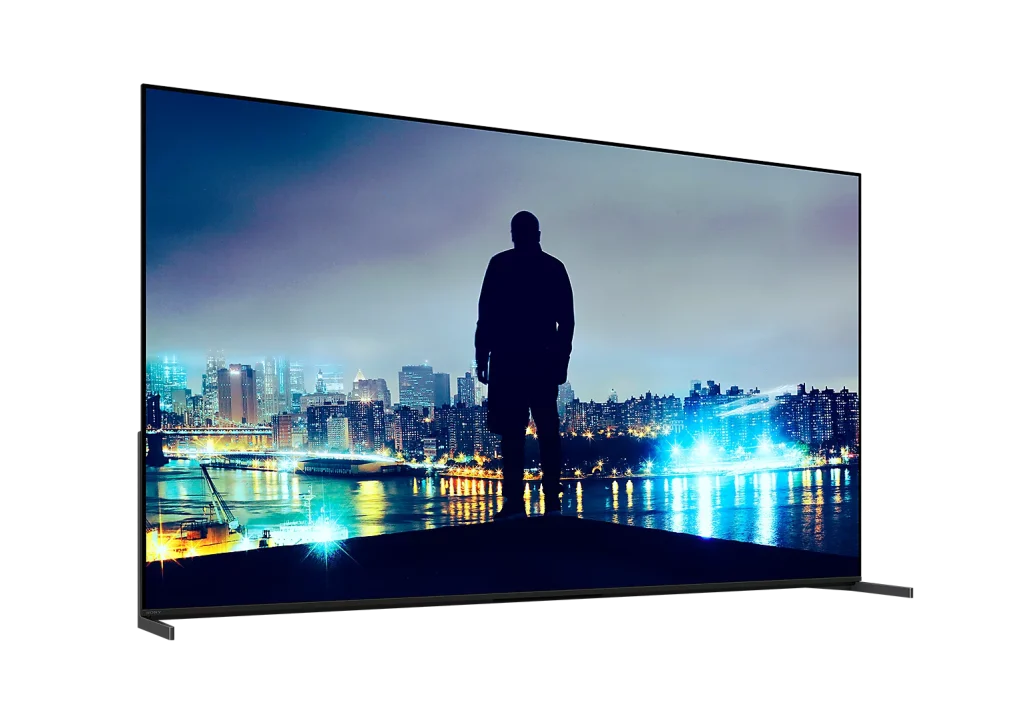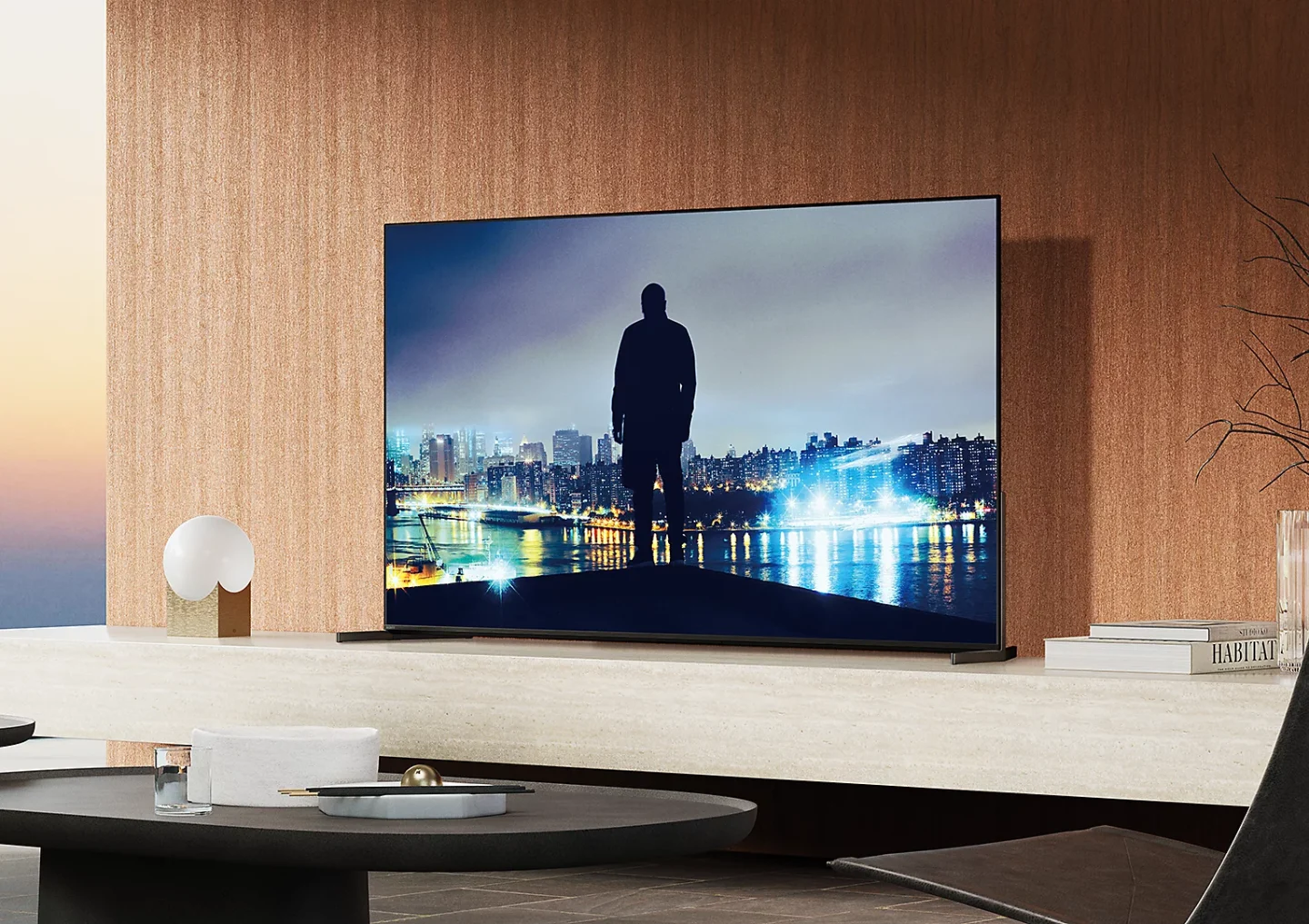The Sony BRAVIA OLED 8 II arrives in 2025 as the Japanese brand’s new flagship in the high-end television segment. Featuring a fourth-generation QD-OLED panel and Sony’s XR processor, this model aims to establish itself as one of the benchmarks in image quality. However, it also inherits some limitations worth considering.
Design and build — Refined aesthetics, restrictive installation
The BRAVIA OLED 8 II’s finish is impeccable. Thin bezels, clean rear panel, and solid materials convey the premium feel expected in this price range.

The metal stands offer stability but are designed to be placed only at the extremes. This can be problematic if your furniture isn’t wide enough.
Pros
Solid construction and high-end finishes
Elegant and minimalist design
Cons
Stands can only be installed at the extremes
Somewhat wider than other 65-inch models
Performance and image — Reference brightness and color
The 4th generation QD-OLED panel excels by reaching brightness peaks close to 2,200 nits in HDR (10% window). This allows for spectacular contrast in content, absolute blacks, and precise colors even in dark scenes. The absence of the white subpixel improves color fidelity compared to LG’s W-OLED panels.

In calibration, the TV comes very well adjusted from the factory, with dedicated modes for Netflix and Prime Video. However, it still doesn’t offer HDR10+ compatibility, which limits options compared to direct competitors.
Pros
Pure blacks and outstanding shadow detail
Notably superior brightness to the previous model
Vibrant and accurate colors
Excellent factory calibration
Cons
No HDR10+ support
Less bright in SDR than 2025 competitors
Sound and multimedia experience — Acoustic Surface with personality
The Acoustic Surface Audio+ system turns the screen itself into a speaker, achieving clear voices and good environmental separation. With 50W of power and support for Dolby Atmos and DTS, the result is convincing for most users.
Still, those seeking a complete cinematic experience will find better performance in a premium soundbar or multichannel setup.
Pros
Powerful and defined sound
Dolby Atmos and DTS compatibility
Cons
Doesn’t replace a dedicated audio system
Looking for surround sound? Check out what the Panasonic Z95A offers.
Gaming and connectivity — Good performance, but far from leading
For gaming, it offers 4K at 120Hz, VRR, and ALLM, with response times of just 0.1ms and measured latency between 8-10ms. While sufficient for casual sessions, it falls behind LG and Samsung, which already offer 4K at 144/165Hz and lower input lag.
Additionally, only two of its four HDMI ports are 2.1, limiting those connecting multiple consoles and a PC.
Pros
Low latency and good gaming response
Dolby Vision Gaming compatibility on Xbox
Cons
Only two HDMI 2.1 ports
Doesn’t reach competitors’ refresh rates
If gaming on OLED is your priority, the Samsung Odyssey G8 might be a great option.
Conclusion — A TV for demanding cinephiles
The Sony BRAVIA OLED 8 II shines with its own light in what it does best: delivering impeccable image quality, precise calibration, and above-average integrated sound. It’s an ideal choice for those who prioritize movies and series at home and value Sony’s color accuracy and processing.
However, its limitations in HDR10+, HDMI connectivity, and gaming performance make it less attractive compared to alternatives like the LG G5 or Samsung S95F, which offer more SDR brightness, greater gaming versatility, and more competitive pricing.
Technical specifications
| Feature | Details |
| Panel | QD-OLED 4K UHD 65″ (3,840 x 2,160), 120Hz |
| HDR | Dolby Vision, HDR10, HLG |
| Processor | XR Processor + SoC MediaTek Pentonic 1000 |
| Operating System | Google TV |
| Internal Storage | 32GB |
| Sound | 50W, Acoustic Surface Audio+, Dolby Atmos, DTS:X |
| Connectivity | 2x HDMI 2.1, 2x HDMI 2.0, Wi-Fi 6E, Bluetooth 5.3 |
| Gaming | 4K120, VRR, ALLM, Dolby Vision Gaming |
| Dimensions | 144.3 x 84.4 x 33.9 cm (with stands) |
| Weight | 24.2 kg (with stands) |
Recommended alternatives
- LG G5 OLED: Higher brightness in SDR and HDR, four HDMI 2.1 ports and better gaming performance, though with HDR10 contouring issues.
- Samsung S95F: Very accurate color, great brightness and four HDMI 2.1 ports at 165Hz, but without Dolby Vision support.
- Sony A95L (2024): Brighter in SDR with better factory accuracy, plus more economical than the BRAVIA 8 II.
